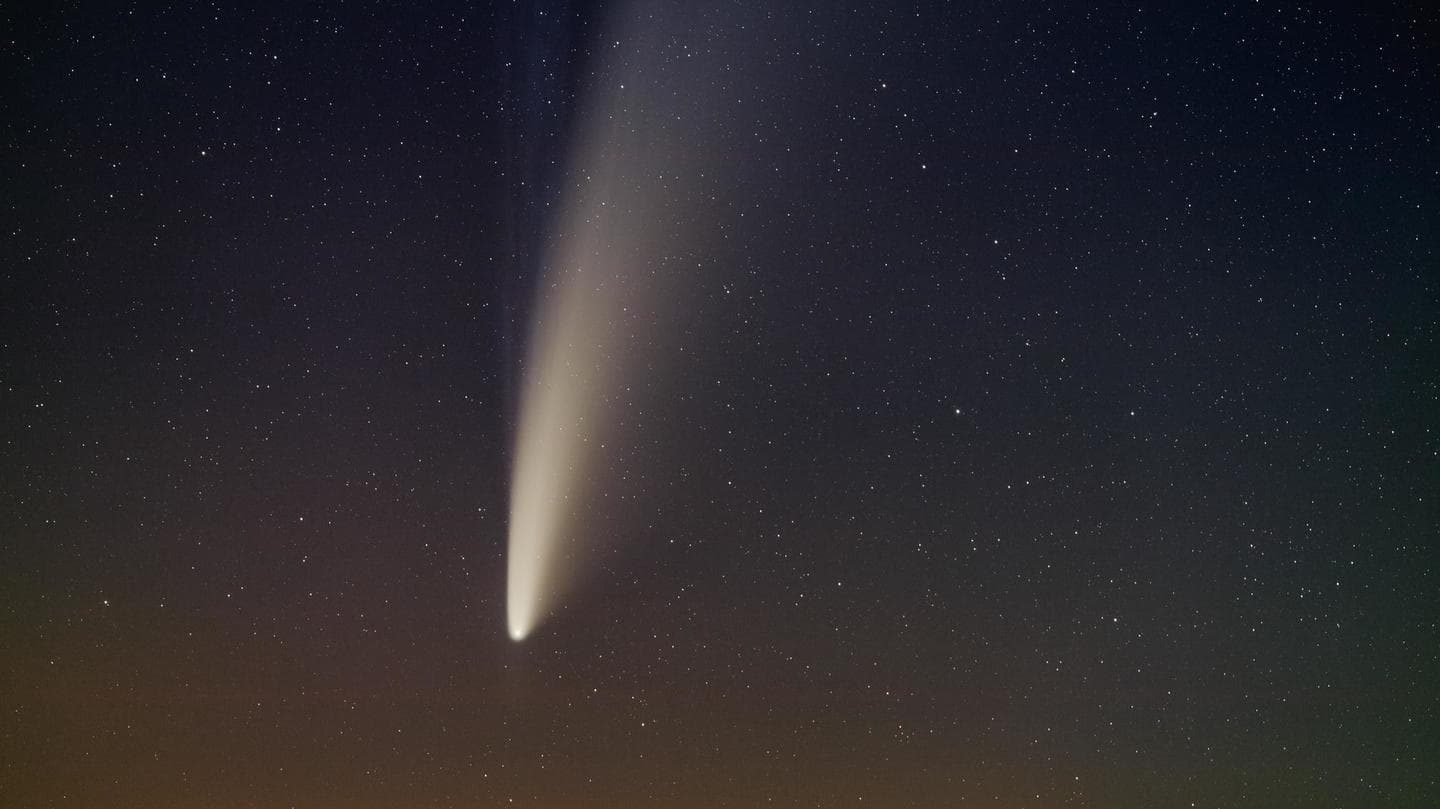
Rare comet visible from today, will disappear for 6,800 years
What's the story
Starting tonight, July 14, a rare comet will streak across the night sky for a period of 20 days. The object, officially dubbed C/2020 F3 NEOWISE, is special for a number of reasons, but the best part is, people living in India will be able to watch it directly with the naked eye. Here's all you need to know about it.
Comet
First, a bit about the comet
Discovered in March by NASA's Near-Earth Object Wide-field Infrared Survey Explorer (NEOWISE) mission, C/2020 F3 is an icy comet in a near-parabolic orbit around the Sun. It made its closest approach to the Sun, at a distance of 43 million km, on July 3 and is now set to fly by Earth on its return journey to the outer parts of the Solar System.
Rarity
Why it is rare and special?
During its close approach to the Sun, the comet's icy outermost layer was heated up, releasing a glowing, large tail of debris. Now, this so-called "natural firework" will be directly visible to people on Earth. This close approach to Earth will be a once-in-a-life view, as the comet will not make another close approach and streak across the sky for the next 6,800 years.
Age
It is said to be over 4 billion years old
Another interesting thing about this comet, estimated to be 5 km wide, is the fact its nucleus is covered with sooty dark particles leftover from its formation nearly 4.6 billion years ago - when our Solar System was created. Also, despite the fiery flyby the Sun and even Mercury's orbit, it has retained most of its mass, which is pretty amusing in itself.
View
When, where to watch it?
For skywatchers in India, C/2020 F3 NEOWISE will be visible every day after sunset for about 15-20 minutes. The show will begin starting the evening of July 14, with the comet appearing in the northwestern sky, which is 20 degrees from the horizon. Then, in the coming days, it will climb higher in the sky, remaining visible for a longer period.
Trick
Remember: Pick an open space with large sky view
For the best viewing experience, we recommend looking up from an open space that would give you a large, clear view of the night sky with minimal distractions such as buildings or artificial lights. This could be your neighborhood park or even your terrace. In case you go for the former, do not forget to follow social distancing protocols, wearing a mask.
Information
You can see the comet through July
The comet will make its closest approach to Earth on July 23 but will remain visible throughout the month. After that, it will fade away, making its way into deep space for the next thousands of years.